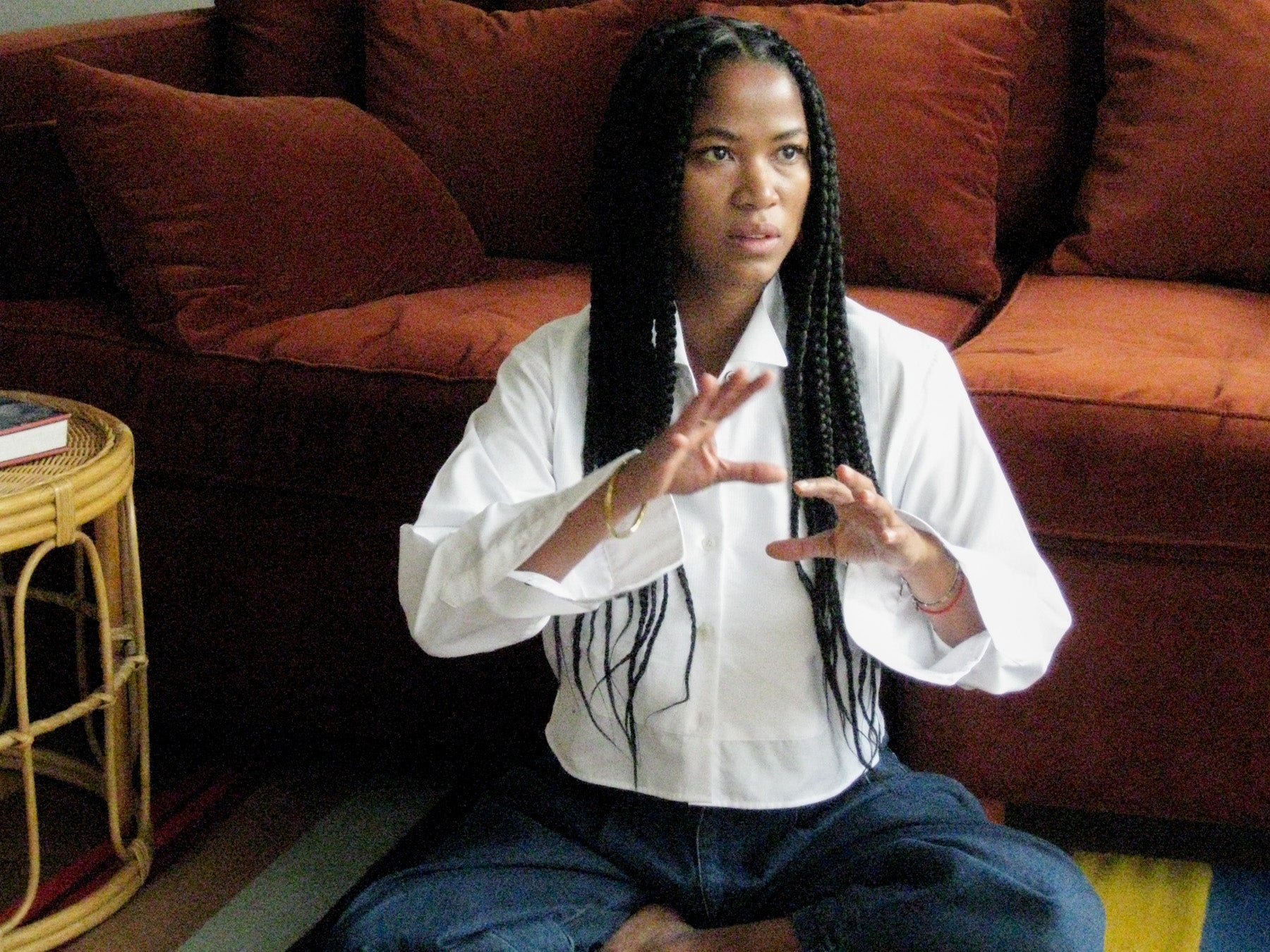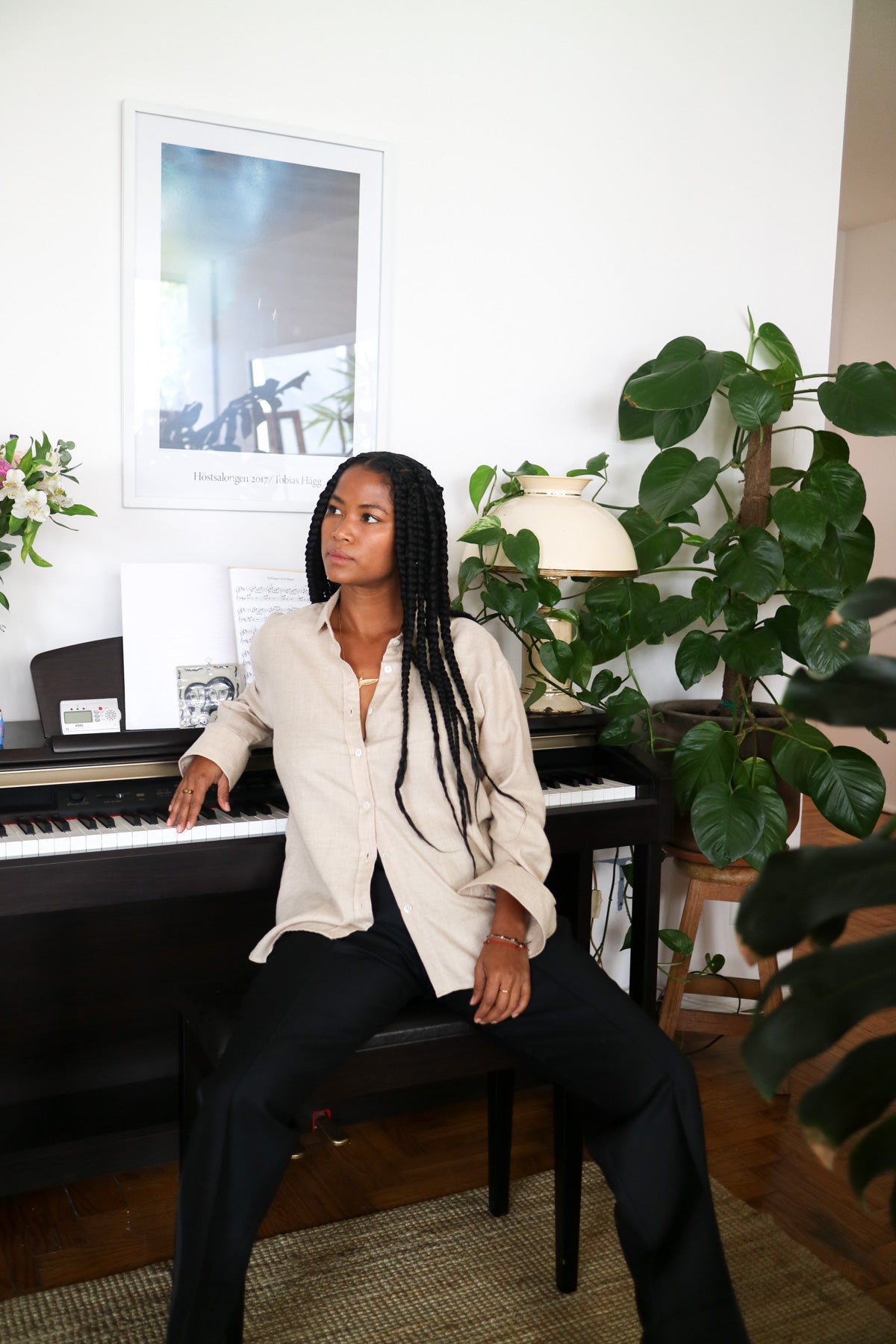

Can you tell me where you grew up and how you came to live Mexico City?
My story begins in Jacmel, a beach town with colonial houses painted in pastel hues, on the south coast of Haiti by the Caribbean Sea. At the age of 5, I moved to Canada and grew up in a small town near Montreal, absorbing all things maple syrup and winter sports.
Then came the glittering lights and fast pace of New York city where I moved for grad school. I spent almost a decade there and loved every moment of it. Post that, I dove into global humanitarian work, turning into a bit of a nomad with no fixed address. When the pandemic hit, I was living in Bangladesh, working with the UN on the Rohingya refugee crisis. It was a disorienting time, but amid lockdown, I virtually collaborated with a group of artists, exploring the concept of home. A pretty powerful topic when the entire world was on pause, and I'm in a place where millions have been displaced.
That project, combined with my time working with refugees, sparked a realization—I needed a place to anchor my soul. So, with a world map as my compass, I let my gut guide me, and Mexico beckoned. As my work chapter closed, I grabbed a one-way ticket. Landing in Mexico City felt like the universe gave me a knowing nod and right then, I knew—I’d discovered my new home.

What was your childhood like? What kind of child were you? What types of things did you like to do as a kid?
Ah, the good ol' Canadian days—a childhood molded by my dad's love for the great outdoors. The woods, was a special place for me—a canvas for inventing imaginary worlds and building secret hideouts. Our cabin was a haven where time had its own rules. That place gifted us with breathtaking sunsets that remain etched in my mind. I was a pint-sized adventurer—fearless, joyful, and bursting with creativity.

I would spend countless hours dedicated to crafting sculptures from aluminum paper or whatever I could get my hands on, drawing and painting. Since I have been in Mexico, my goal has been to get back to more creative projects. It's all about revisiting the things that made little me feel like me. Because let's be real, adulthood could use a sprinkle of childhood magic, don't you think?

How and when did you find film? Any works that really spurred the passion in you?
I truly discovered the power of film when I was in grad school. Back then, I was studying economic development because I wanted to work for the UN. I remember watching Deepa Mehta's Elements trilogy, which tackled issues of social reform in India. The impact of her cinematic magic stirred something deep within me, like a wake-up call to the potential of film as a weapon of mass transformation. That sowed the seed for a future exploration. I began thinking about using film to challenge and reshape narratives surrounding social issues that hit close to home. Throughout my career as a humanitarian worker, I have also tried to use film and storytelling to shed light on important issues.

You're currently working on a film about death. Has living in Mexico shaped the way you think about death? If not, what spurred you to work on this?
I lost my dad many years ago, and accepting it was difficult for a long time. This struggle was one reason why I spent a substantial period without a home—because he was my home, and without him, I felt lost. Living in Mexico taught me a lot about death, grieving, and healing. It became a place where I started making peace with his loss.
The project I am working on is a short documentary film about death. Death is a shared experience that binds us as human beings. The film aimed to emphasize the universal aspect of death that connects us, irrespective of which side of a border we are from. The way we face it varies based on our culture, and how people deal with death reflects a lot about the things they value in life. In many parts of Mexico, death is viewed as a part of life, and people celebrate the lives of their loved ones by honoring them every year during Dia de los Muertos. I believe many cultures can learn valuable lessons from Mexican traditions surrounding death. In embracing these traditions, we can find common ground that transcends borders and enriches our understanding of the human experience.

I know you’ve recently become interested in health and nutrition. What sparked this interest? We’ve talked about this but there is definitely a void in the medical industry to provide holistic care. What was your journey like to advocating for your own needs?
I had an emergency surgery this year and my body was out of balance after. And conventional solutions weren't making a significant difference. Given my existing interest in plant medicine, I delved into alternative approaches to rebalance my body. Through experimentation, I discovered some herbal remedies that worked wonders for me, opening up a world of knowledge for more holistic care.
I don't dismiss modern medicine; it has brought about numerous breakthroughs that have improved our world. But, I believe that conscious choices about what we put into our bodies can contribute to a healthier life. This applies to both medication and the food we eat. Recognizing food as our first medicine, along with knowledge about herbal remedies, has empowered me to take control of how I maintain my body's health.

What kinds of clothes make you feel most yourself? What do you wear most often?
I prefer clothing that is comfortable and allows me to express my personality. I don't see myself as someone who follows fashion trends, and I don’t like to blend in. I like incorporating accessories from the places I've visited as a reminder of the experiences lived and the people I've met.

Did moving to Mexico change the way you shop?
Moving to Mexico definitely changed the way I shop. I find myself appreciating more the artistry of handmade clothing. I'm drawn to pieces that possess a distinct 'soul,' creating a unique connection between me and the skilled artisan who brought them to life. There's a certain authenticity and warmth in handcrafted goods that I've come to cherish, making each item more than just an object – it's a tangible story of creativity and craftsmanship.

Kettie was photographed in her home and around her neighborhood in Condesa, Mexico City. She wears the Four Season Shirt, The Reversible Funnelneck Shirt, The Relaxed Shirt in Wool Cotton and The Cropped Tuxedo Shirt.



Comments
Post comment
Recherche